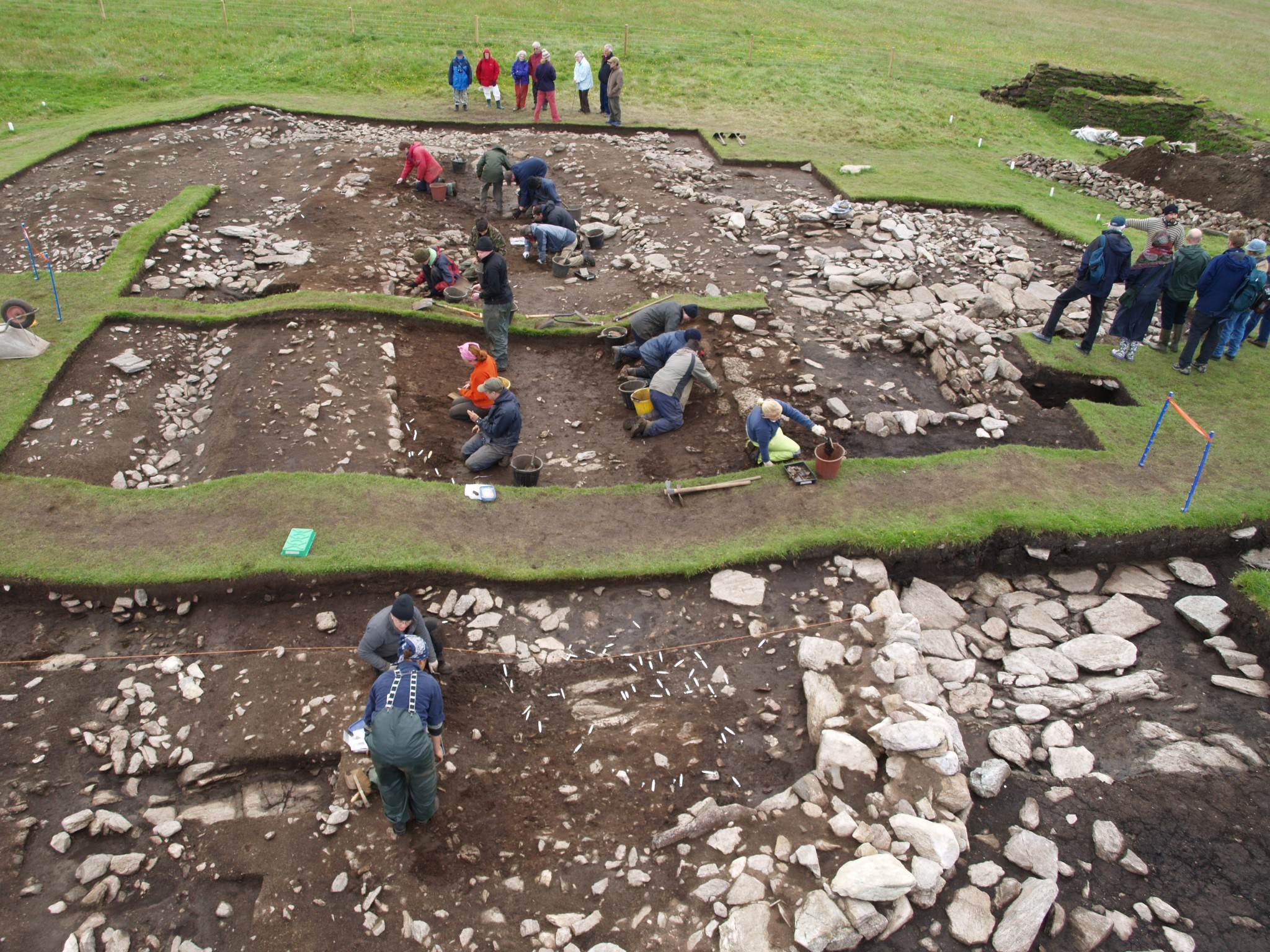Early Vikings discovered in Unst
Published: 22 October 2019

A recent reassessment of the radiocarbon dates from the longhouse excavated at Underhoull has narrowed the date range to between 805 – 1050 AD, and probably between 880 – 1000AD. That puts the date of the longhouse two centuries earlier than archaeologists originally believed, which means that Upper Underhoull is the earliest, conclusively dated, Viking longhouse in Shetland.
Upper Underhoull was excavated in 2007-8 as part of Shetland Amenity Trust’s Viking Unst project, along with longhouses at Hamar and Belmont. All of them were then dated to 11 – 13th centuries. Underhoull was quite high up in the hill so a later date wasn’t surprising. Archaeologists have always assumed that the earliest sites would either be close to the coast or takeovers of sites where there is earlier Pictish settlement.
Raw radiocarbon dating results in a long trail of error around a date. Now statistical techniques have developed which has changed what people can do with them. This was done for the Underhoull dates by Dr. Zoe Outram, one of the original Bradford University team who worked on the site. Dr. Julie Bond, the site director said, “The dates themselves haven’t changed but what we can do with them has, so instead of having a 300 year time span, we can reduce it.” The new analysis shows that the site had Viking origins, but it was still long-lived, up to 1260 – 1380AD.
One of the finds always hinted at early origins for the site. Someone had carved a soapstone figure out of what was originally a soapstone line-sinker. These were used by the first Vikings but were relatively short lived. Dr. Bond believes that this is a carving of Thor, the god of the winds, a particular favourite with fishermen. The figure has pursed lips, as if creating the wind.
“There have been claims for other longhouses in Shetland to be early Viking and this may or may not be the case,” said Dr. Val Turner, Regional Archaeologist with Shetland Amenity Trust. “This is the first time we have dates which are absolutely definite. But there is still room to find even earlier dates for Viking settlement and I expect that sooner or later, we will.”

